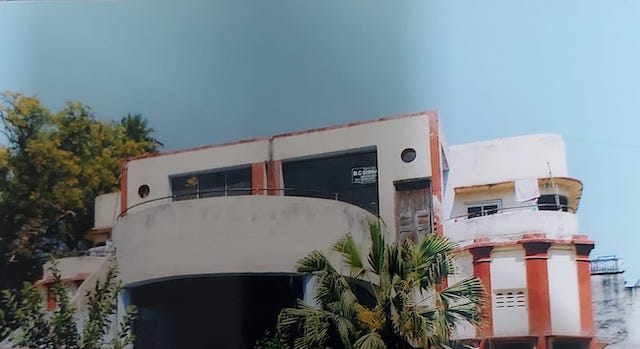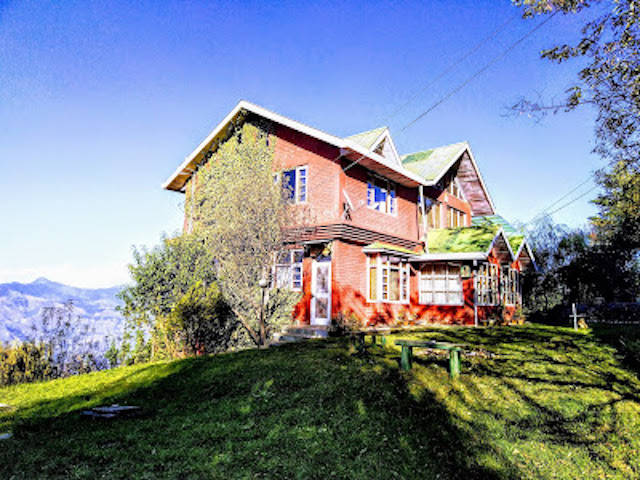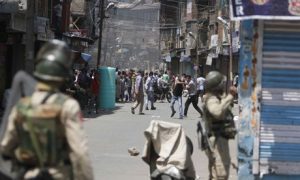I have always believed that the houses we build for ourselves have anthropomorphic qualities, that they are as much part of our families as any other member, that they also share our feelings and emotions, that they reflect our own states of mind, that they too have their own destinies just as we do, destinies inextricably linked with ours. They are not mere brick and mortar, they are living, sentient beings like us, they go through good times and bad, and like us, they also mature, age and die. And as time marches on inexorably, I am only getting more confirmed in my belief.
Houses, dwellings, homes are an extension of their creators and of those who dwell- or dwelt- in them. Over time they absorb the vibrations- both positive and negative- that their owners radiate and in turn reflect them back. You must surely have noticed that there are happy houses and sad houses, houses that spontaneously give off cheer and well-being while there are others that diffuse sorrow and misery. Ponder a bit more, and you will also notice – you cannot fail to that these effusions invariably reflect the state of mind and emotional condition of the people who live in them. (They are very similar to our pets, dogs especially, who also reflect the personalities of their owners. Show me a dog and I’ll be able to tell you what kind of person his master is! ) To adapt Tolstoy’s famous observation- all happy houses are happy in the same way, but all unhappy houses are unhappy in their own, different ways.
I have observed this phenomenon playing out in my own extended family. Both my grandfathers built fine mansions in the prime of their lives. My paternal grandfather, Pandit Kalicharan Shukla who had a flourishing chain of bookshops in Calcutta, built a massive haveli in his village Husainganj in U.P. sometime in the early 1930’s. In 1939 my maternal grandfather, Shri Roopnarain Shukla, a leading advocate of his time, built a mansion in Kanpur, U.P. Both the buildings are now nearing centurion status, but their destinies have been different, like that of two individuals, and it shows in their visage and condition.
For its first forty years or so the Husainganj haveli was a cheerful beehive of activity. Its thirty-odd rooms were always occupied by hordes of Shukla’s – my grandfather’s extended family, his five children and their progeny. The kitchen worked almost 24×7, especially when we as kids and teens landed up there for our holidays, and halwais were called in to make sweets, Akhand Ramayan and other religious ” paths” were organised frequently. Neighbours panchayat members, village officials were always dropping in to have a ” darshan” of Pandit Kalicharan. There was no electricity those days but at nights the haveli glowed with a hundred lamps and sounds of laughter and music wafted through the air, almost as if the haveli itself was giving voice to its delight at playing host to so many of its family.
Things started changing rapidly in the 60’s and 70’s. Both my grandfather and grandmother died in quick succession, their children retired to different towns, and my generation scattered all over the globe, busy with their own families. No one had the time or perhaps even the inclination to go back to a village with no power, piped water, flush toilets or cable TV. Holidays were now spent in hill stations, Goa or London. The haveli was locked up and more or less abandoned; with a joint family now running into dozens, everyone’s responsibility became no one’s responsibility. All of Pandit Kalicharan’s children are also now gone; the haveli is a multiple orphan, crumbling and dilapidated, both its body and its heart broken by the inexorable passage of time.

It’s a ruin now, an old man who has lost the will to live, forsaken by those who once played in its lap, waiting for death, its denuded doors and windows like empty eye sockets, looking upon a world without hope. Once a happy home, it’s now a hollow shell. Not unlike a lot of old men living alone in empty flats in uncaring cities, hoping against hope that their children will visit them someday, waiting for their destiny to play itself out.
My maternal grandfather’s mansion in Civil Lines, Kanpur, has been more fortunate. Although of almost similar vintage, it has aged much better. Roopnarain Shukla also had a large family- six children- all of whom grew up in this house. But, unlike the haveli, this home was never abandoned; my Mama/ Mami and cousins still live there- the fourth generation. And the building shows this- a still graceful 80 year old, full of vitality and activity, glowing in the evenings, rejuvenated from time to time with parties, poojas and ” paths”. I go there often, but do not have the feeling of sadness and a dull regret ( mixed with guilt) that Husainganj engenders. It’s a happy house, looking to the future and not the past, aware that it is still cherished and loved, nurturing its residents, not one which has given up hope and is just waiting to die.

Both houses mirror the fate that befalls many humans, the different paths that life takes- they are but reflections of the attitudes and emotions of those who live or lived in them. Where there is love and care there is happiness, where there is neglect and unconcern there is despondency. In many ways, our houses reflect the direction our own destinies have taken.
Which is why I always envy my cousins in Kanpur – you have to be fortunate to have been born and brought up in the same house where your parents and grandparents also lived (and perhaps bid you farewell), for their memories make it a consecrated and blessed place. Walls not only have ears, they also speak- of your family’s past, of events witnessed, of the good times and the bad. They keep us together and remind us of family bonds which can otherwise unravel very quickly in these turbulent times. Families which stay together stick together. And our houses reflect all this, make it possible- their bricks are the DNA, the building blocks of families.
And I sometimes wonder what fate awaits the house I built in Mashobra in 2007, which Neerja has lovingly named “Shinay” ( a state of quietude, meditation and inner peace.) Since then we have had more than our fair share of adversity and misfortune which kept us in exile in Delhi for a long time. But Shinay has provided us a safe harbour, a place we continue to return to for solace and to heal our souls.

But the march of time will take its toll, and I occasionally wonder: will Shinay, in the years to come, continue to greet the morning sun with the joyous promise of another day, will the birds continue to sing in the trees that surround it, will the flowers still bloom with that little extra tint of colour and whiff of fragrance? Maybe it’s better that I don’t know what awaits in the womb of fate. For in time the red brick walls of Shinay will tell their own story, like all houses do.
| The author retired from the IAS in December 2010. A keen environmentalist and trekker he has published a book on high altitude trekking in the Himachal Himalayas: THE TRAILS LESS TRAVELLED.
His second book- SPECTRE OF CHOOR DHAR is a collection of short stories based in Himachal and was published in July 2019. His third book was released in August 2020: POLYTICKS, DEMOCKRAZY AND MUMBO JUMBO is a compilation of satirical and humorous articles on the state of our nation. His fourth book was published on 6th July 2021. Titled INDIA: THE WASTED YEARS , the book is a chronicle of missed opportunities in the last nine years. Shukla’s fifth book – THE DEPUTY COMMISSIONER’S DOG AND OTHER COLLEAGUES- was released on 12th September 2023. It portrays the lighter side of life in the IAS and in Himachal. He writes for various publications and websites on the environment, governance and social issues. He divides his time between Delhi and his cottage in a small village above Shimla. He blogs at http://avayshukla.blogspot.in/ |



